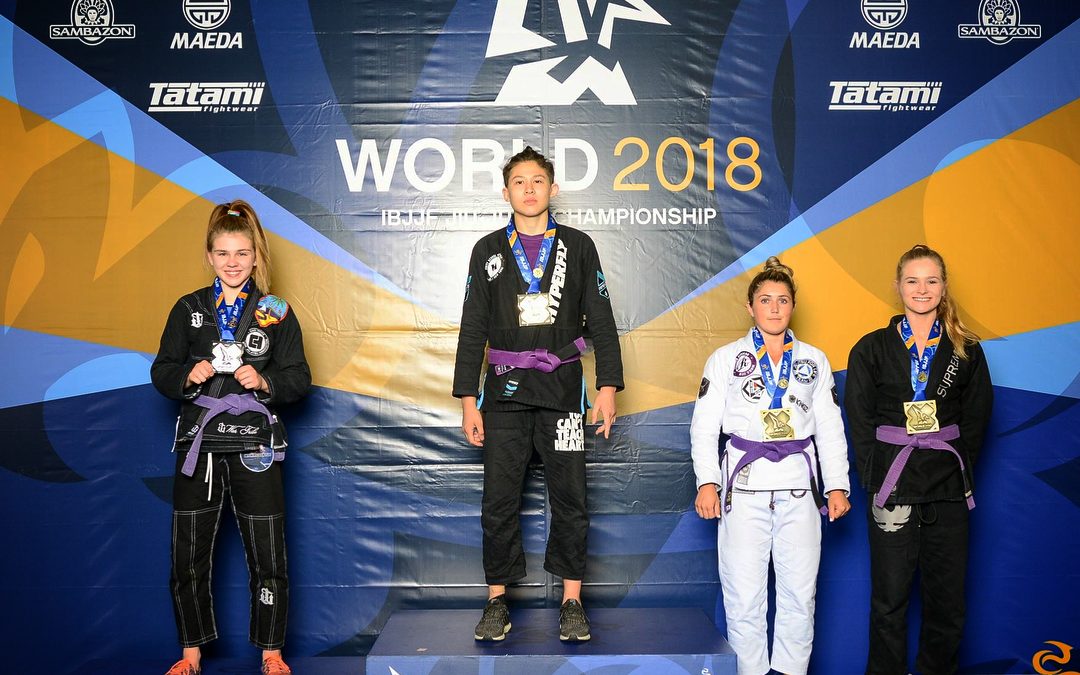Margot Ciccarelli-Tang, is the founder of Nømadic iD & a Purple Belt World Champion (IBJJF 2018)
She has most recently won the IBJJF Asian Open 2018 and has no long term fixed abode. She is of Chinese-Italian descent, 25 years old, raised in London and has been travelling the world extensively. Mars started her BJJ journey in July 2012, is currently a purple belt under Murilo Santana, head of Unity Jiu Jitsu in New York City and contrary to popular belief, Mars is an abbreviation of Margot and not Marsupial.
-
So, are you the quintessential definition of a sandbagger?
I think I am the quintessential definition of unorthodox haha. Let me paint you an image of how I perceive jiu-jitsu firstly and maybe this will shed some light for everyone. Jiu-jitsu can be used as a metaphor for life. Trials and tribulations will arise and you are either going to let it beat you down and give up, or you are going to continue to persevere and practise patience.
We can get obsessed with obtaining new material items but aside from the short hit of dopamine, what does it actually give to you? The item or object does not give you anything except occupy more space in your life.
Now, framing this back into a jiu-jitsu context. There is a different belt standard all around the world so there are also naturally discrepancies in how people are promoted. I personally find that when you are promoted faster as a competitor, the tendency to continue to practise mainly your A game is prevalent. Even for some of those who aren’t promoted fast but compete a lot will have this tendency. This can really stall your development and having this extra time at my current rank to do so (although I am super keen to compete at brown and black) has been really great to explore more within the art and develop certain things as a teacher too.

Under-hook De la Riva
-
Which country are you currently writing these answers from?
I am currently sat in a quaint little cafe in Mission District, San Francisco! Just got off a flight from Melbourne last night.
-
You seem to have the ideal lifestyle of travel & training. A lot of people including myself would find this quite inspirational. How did you create the lifestyle you currently live?
There is most certainly the fair share of ups and downs to leading this nomadic lifestyle. It does evidently from the outside look like a rather glamorous lifestyle to be flying around all the time, exposing yourself to different cultures and ways of thinking, training, meeting new people etc, but it’s tough.
The constant departures from people you’re close to and this sense of instability at times; you have to really be okay with putting yourself in uncomfortable situations. I’m generally not a very attached person, but even I find it hard at times to keep saying goodbye.
It’s ideal for me because I thrive off of periods of socializing a lot and being solitary to go inward a little more and reflect on what needs to be done and process my thoughts. It really allows me to set my intentions and actually keep my training and development more focused. I feel like it’s too easy to stay on auto pilot and automate your training when you hit a certain sort of routine or if you’re constantly fatigued.
Routine seems to fatigue my interest and energy more and more these days. I love being inspired by people that I come across on my travels that you can see from just the first 20 seconds of them rolling that they are so deeply passionate about the art and really enjoy jiu-jitsu for the art and not just about proving who’s the best or the most dominant.
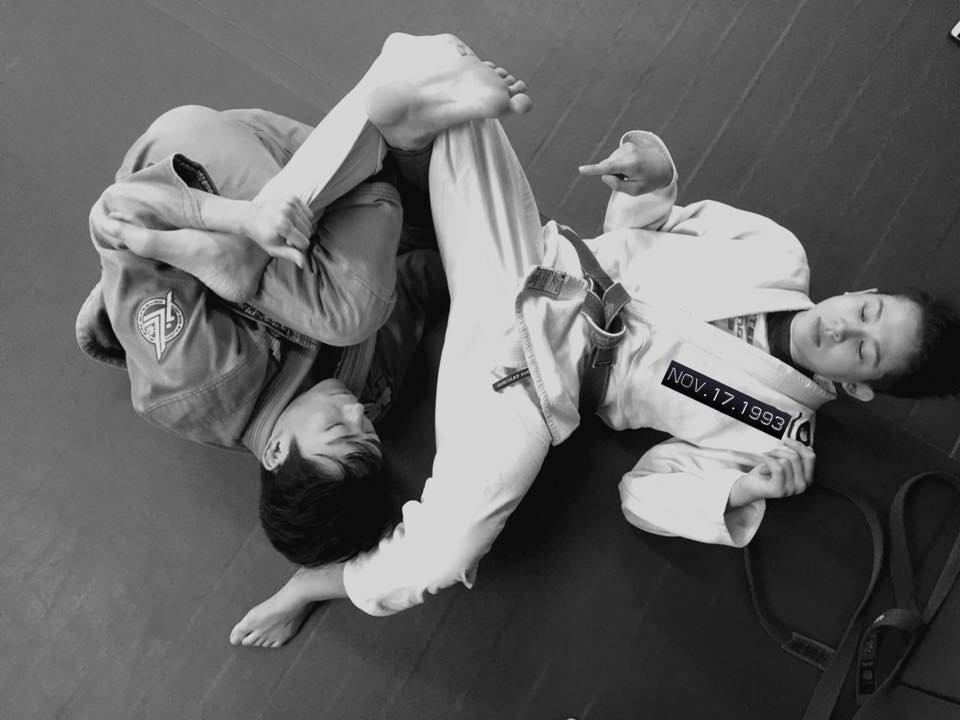
Hooks & Angles
-
You have a traditional background in martial arts; so based off of this generic question did ‘Jiu Jitsu save your life?’ or would you contend that martial arts saved your life?
I think it’s not a matter of saving one’s life with martial arts. It can have this effect and influence on certain people, I’m certain but for myself, I was not in dire need of something when I began my martial arts journey. I just had a strong innate desire to train like many youngsters did back in the day. The strong martial arts influence from the old school Kung Fu movies and such were a huge inspiration to me. I do think it’s a great tool that can teach you how to better live your life and find your path of self-actualization.
I realise more and more every day that my martial arts practise over the years really shaped the way I think and how I manage to stay composed under pressure, how I process adversity and my own emotions. Philosophy and martial arts are deeply intertwined for me, so I think it’s really unfathomable for me to imagine a life without martial arts or to even imagine what I’d be doing now. It didn’t save my life, but it’s shaped my life and my being vastly.

Olavo Abreu, Funny Fact: Margot’s first bought gi
-
2018 has been quite the competitive run for you, are you looking at the same competitive goals for 2019? What are you 2019 goals outside of Jiu Jitsu?
I’ve been brewing in the background this year so far, but I’m planning to compete again in April at the UAEJJF World Pro. I decided to spend more time on developing certain teaching material and developing certain skill-sets for myself a bit more. Skill-sets of my own and some close friends/students inside and outside of jiu-jitsu. You’ve probably noticed already that I cross train in different disciplines with a bigger focus on dance (in particular contemporary dance).
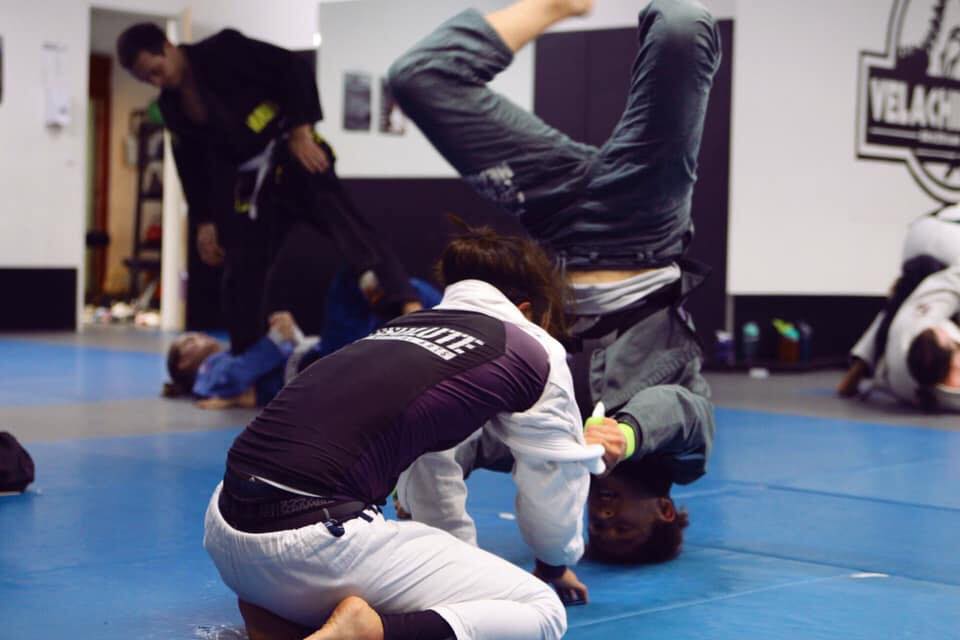
It’s all about perspective
-
So what’s with all the modern dancing? Were you just not any good at ballet?
Ha! Funny that you mention this. I was actually named after a famous prima donna Margot Fonteyn, so my mother’s dreams of me doing ballet as a child were crushed when I insisted on doing Kung Fu. I was (and still am) an avid martial arts film aficionado.
I actually started practising ballet as an adult and really I’m not great at it yet but really for me it’s about embracing the white belt mentality all over again and taking away what I can in a freer context. Ballet is the structure and the backbone of dance supposedly, and contemporary/modern gives you the freedom to play more. There’s no f**king around in ballet.
I believe practising any art or discipline that involves improvisation and gets you to move in as many different ways possible is extraordinary. Perhaps, it sounds like a slight exaggeration on my part, but I am biased because I do also have an enormous passion for music in general, so it’s kind of natural that I’m drawn to dance. As soon as I started to realize what contemporary dance encompassed, I was drawn in, especially with all the floor work stuff.
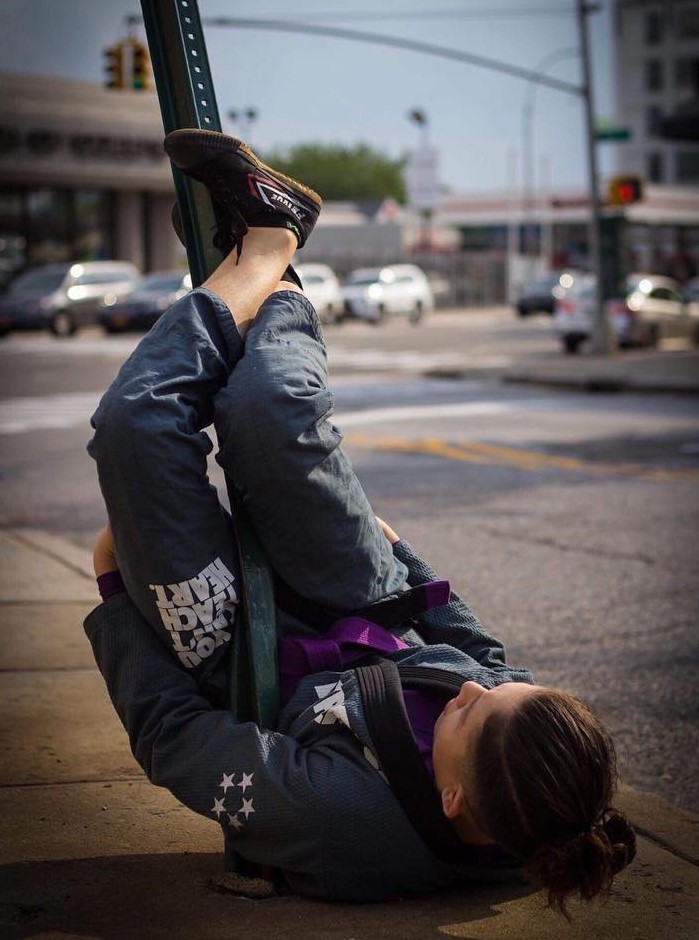
The homeless situation in LA is out of control
I’m basically berimbolo-ing by myself hahaha. Jokes aside, shortly after finding contemporary dance, there was contact improvisation. When I found contact improvisation, I kind of fell in love with it really fast and hard. It’s like jiu-jitsu that doesn’t hurt but a method of practising your physical communication (listening and leading/speaking) in a more collaborative manner. This inspired a lot of the jiu-jitsu pedagogy that I am in the midst of developing.
So it’s a mixture of things. Trying to suck less at ballet, embrace my musicality and artistry but at the same time having my own solo practise outside of jiu-jitsu where I can have the space to brainstorm with less chaos and different perspective.

Never cross the feet
-
In regards to your teaching there was a Brazilian association that forbids purples from teaching, what are your thoughts on this? From what I see there is a demand for your conceptual approach to teaching. Have you encountered any resistance / resistance? Do black belts attend your seminars?
I think this is such backward thinking and detrimental to our society. If for example, there was a 200 hour jiu-jitsu program that certified me (or anyone) to be a teacher then I’d be all for forbidding it perhaps as truly there’s a lack of experience there.
If you are unable to be open to at least listening before you can open your mouth to say you cannot, it can be one of a few things. One, following tradition or two, fear.
I do not view myself as a supreme being of some sort just because I teach at my current rank. I do however see myself as an intelligent individual who does want to innovate and explore more within the art. As much as the art had roots with traditions, it is a modern art that is evolving at a rapid rate. I know what tradition is. I grew up in traditional Chinese martial arts so I understand why people act the way they do, however I think we do not have to always conform to rules to allow for great things to happen.
Despite having said all of this, for the most part I have not encountered resistance and yes, I have had black belts attend my events before. There have been some passive aggressive hints about lower belts teaching that I’ve heard second-hand from my inner circle, but I can only wish that they live their lives peacefully and find better use of their time. I don’t want to show my material to everyone per se. I just want to show it to people who want to see it and are curious about what I do.

Master and apprentice
-
Out of all of the competitions that you have entered which was the most important to you personally?
Yikes – what a question! I think it was my first Pans at blue belt in 2014 actually. It was my first big international competition after winning the World Pro (white belt) in 2013, and it gave me my first idea of where my level of jiu-jitsu was at. I remember feeling and thinking to myself ‘wow, I can really hang at the level of these competitions.’
I do also vividly remember how much I would over-hype certain people because they trained at certain places or locations around the world (I was still in England at the time studying) and it was the first proper realization that letting go of that practise would benefit my mind and training greatly. I used to get really nervous competing but found more and more after abandoning that ‘over-hype’ practise that I stay more and more composed. And of course I have a certain amount of confidence in my strategies and how I play.
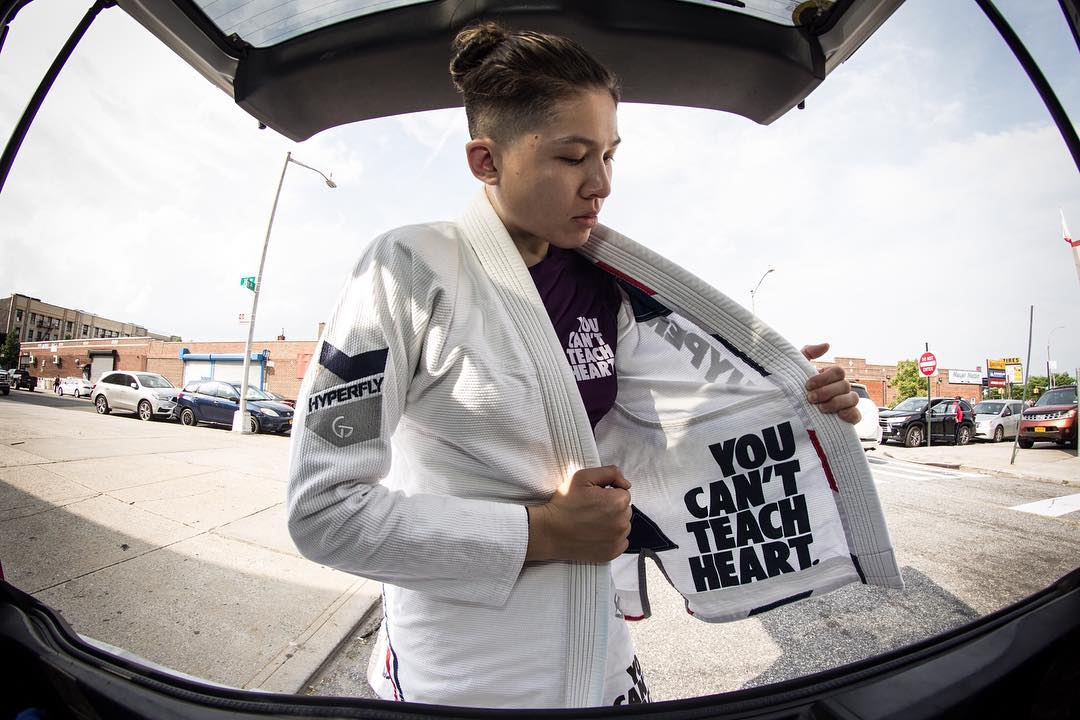
Great internal pocket for keeping your chewing tobacco
-
Based on your ethnic heritage, the obvious question is: “do you eat spaghetti with chopsticks?” In all seriousness how does self-identification come into your Jiu-Jitsu when travelling and training around the world?
Can you even imagine what it’s like having an Italian father and a Chinese mother ask ‘which came first: spaghetti or noodles?’; ‘rice or risotto?’ to prove superiority between the two hahaha.
It’s always a long story when people ask me where I’m from or where do I live. I literally take a look at the person and I have to take a breath before I start my dialogue.
I find it really easy to relate to other people no matter where I go because I’m so culturally diverse and well-traveled, I try to find ways to better communicate with people through cultural understanding etc. I usually say ‘Chinese Italian, born in England, but based between New York and Hong Kong’ but the bases are becoming much more diverse than before. I’ll definitely be around Melbourne and the West Coast (USA) a lot more in the next year.

Current state of jits in Asia
-
What are your thoughts of the current scene of Jiu Jitsu in Asia?
It’s evolving at a rapid rate now, don’t sleep on it.
Japan has had good jiu-jitsu around for quite a while and it is still one of the leading countries in Asia for jiu-jitsu. I’m actually really grateful for Flograppling making videos from within the gyms internally to help highlight jiu-jitsu and gyms over there. It’s nice seeing more Asian gyms being recognised on a global platform.
In a lot of Asian countries, especially for young competitors who are still studying, there’s still a lot of stigma to choose to pursue a sport like this that isn’t as recognised as other established martial arts yet. Many Asian parents want their kids to be in occupations that are notably the stereotypical medicine, engineering, law firm and finance types of jobs.
I do recognise that it’s slowly changing, and there is a great number of amazing competitors around Asia that do still have full time jobs outside of jiu-jitsu.
To be speak briefly also about a place close to my heart and heritage: Hong Kong.
It’s really grown so much since I started in 2012. The technicality across the gyms has definitely improved heaps and bounds and it’s really refreshing to see more women that are willing to try the art too.
There’s a few up and comers that will be coming out of Hong Kong in the next few years; I’m really excited to see what’s to come. A close friend although we don’t train with each other so much anymore; (Viking Wong – also from England who moved back to Hong Kong a few years ago) he has always been a guy with a lot of vision and passion for jiu-jitsu from the beginning and he was always the one that I was looking up to. Watching him compete at the biggest competitions around the world and just being relentless about getting better. He made competing at the highest level seem like not such a big deal to me, that it was all possible to pursue.
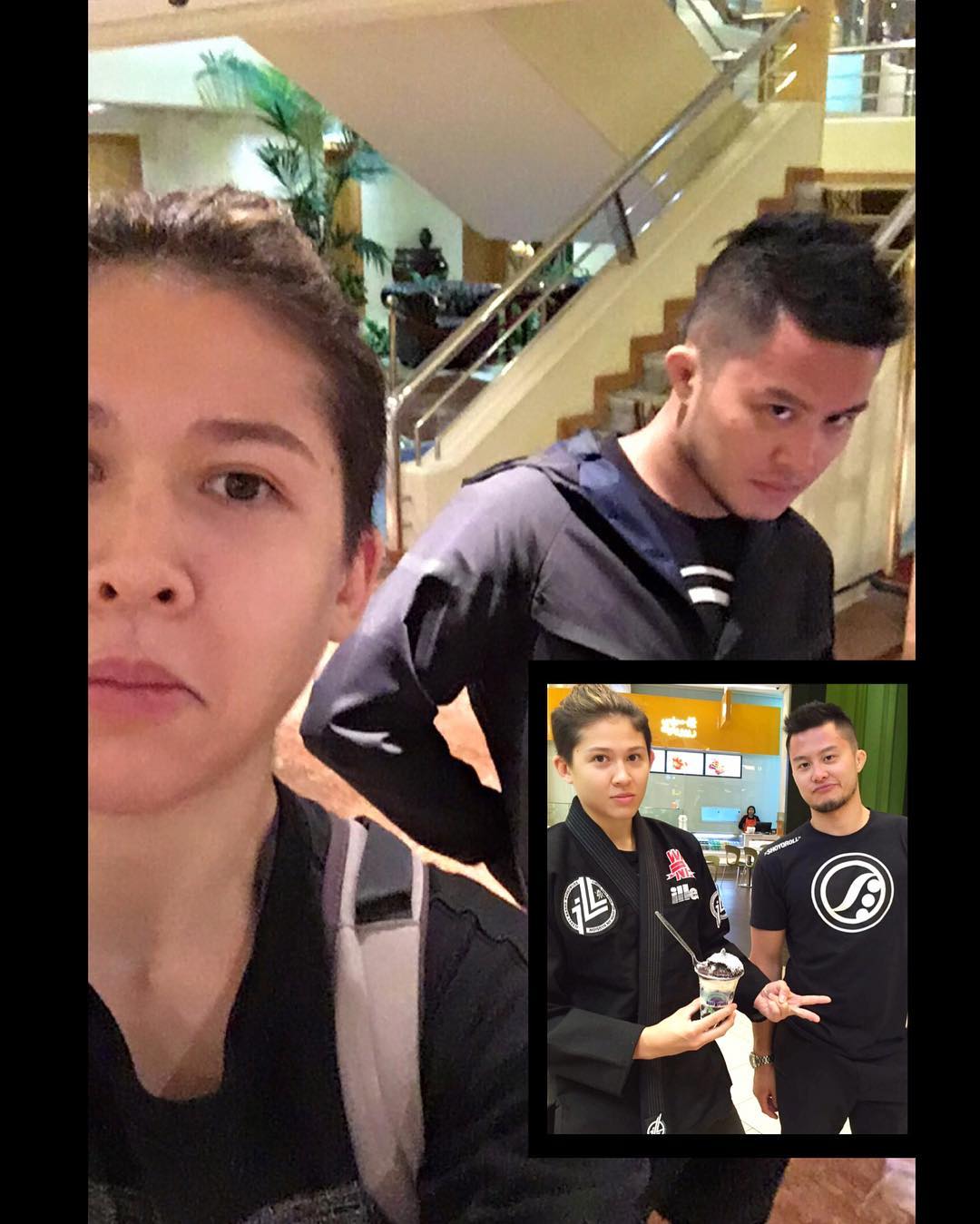
Master Wong and disciple Mars
He’s now a big part of the development of jiu-jitsu in Hong Kong and China and I really think its great exposure for the art and the community to understand what the art is all about even outside of the competitive element.
I feel like a lot of people who are passionate about jiu-jitsu in Asia do end up travelling outside to the US and other places around the world to reach the next level. Myself included – I see my pilgrimage back to Asia as a way to keep giving back to my friends, training partners and students and slowly raising the standard. I think that’s a big thing that I appreciate about my lifestyle, that I’m able to give back in whatever way possible what I’m given.

Hong Kong has come a long way since Suzie Wong
-
How do you find the training environment abroad in comparison to that of your home gym in New York?
Every gym has its own vibe and imagine being me – I’m in different countries a lot of the year so the training environment changes from being classroom based to self-led. A lot of my training outside of New York is self-led and independently run. I organise sessions with a small group of my training partners to get together and we do a combination of drills, specific, rolls and research sessions.
It’s much less hot for sure outside of Unity hahaha. No matter where I’ve gone around the world, even in Australia where it was like a sweltering desert outside…it wasn’t as hot.
The pro training classes often feel like purgatory especially with the looping music tracks, it’s a bit disconcerting at times haha, but jokes aside, the intensity at Unity is very hard to replicate. Everywhere I look in the room, I feel like I can observe a certain aspect of mastery in a certain area of jiu-jitsu which is a really beautiful thing to see. I love looking around the room to watch some of the guys like Paulo, Joao, Junny, Italo etc roll – it’s always a lesson.
The training environment and vibe changes from pro to the general classes at night, but the energy is always one that exudes the idea of ‘team work makes the dream work’. We’re all in this together and we are around to help each other.
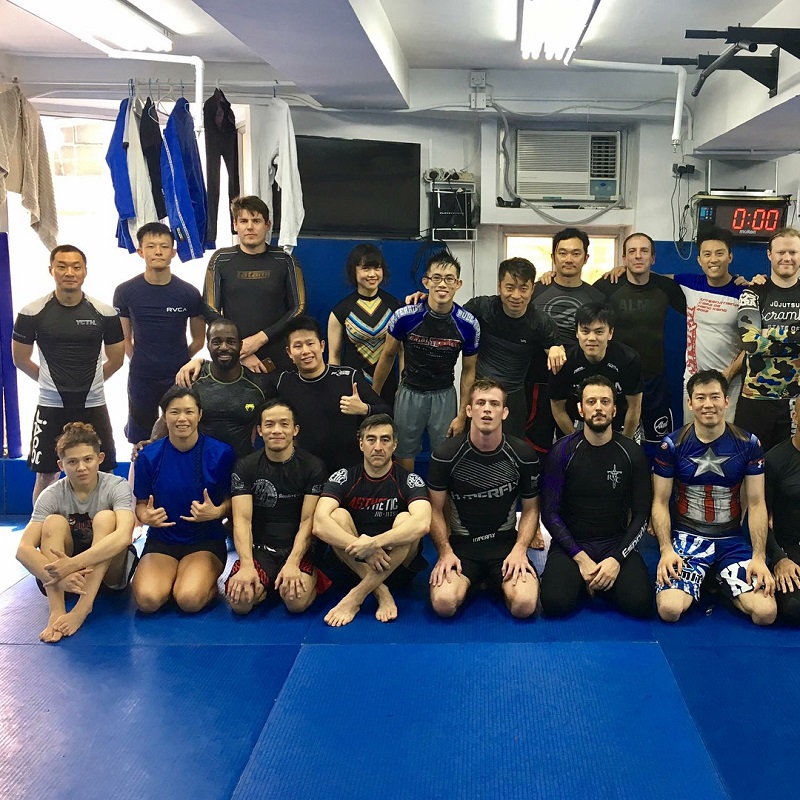
Team work makes the dream work, another notable saying from the gulags.
-
Are there any similarities or distinct feature gym to gym in the various countries you visit?
Class format. It really doesn’t differ so much wherever you go which is both beautiful and a boring thing to see for me hahah.
I am really keen to see more teachers and gyms trying to innovate with class formats. I see so many classes that have to accommodate to a large number of people but it doesn’t help the majority, it’s just a cookie cutter format that allows a somewhat streamlined class to occur as everyone knows what to expect. It becomes really automated and I think novices can struggle in this environment in the long run or become disheartened about training.
I think it is not only the role of the teacher to ensure progress – this responsibility also belongs to the student but I think as teachers, we can definitely be more aware of this and think outside of the box. Not everybody wants to roll hard, and some people still want to enjoy the art. I don’t think its right to say jiu-jitsu will weed out the weak, which I have heard from some people before. It is an all-inclusive art and there’s something for everyone.
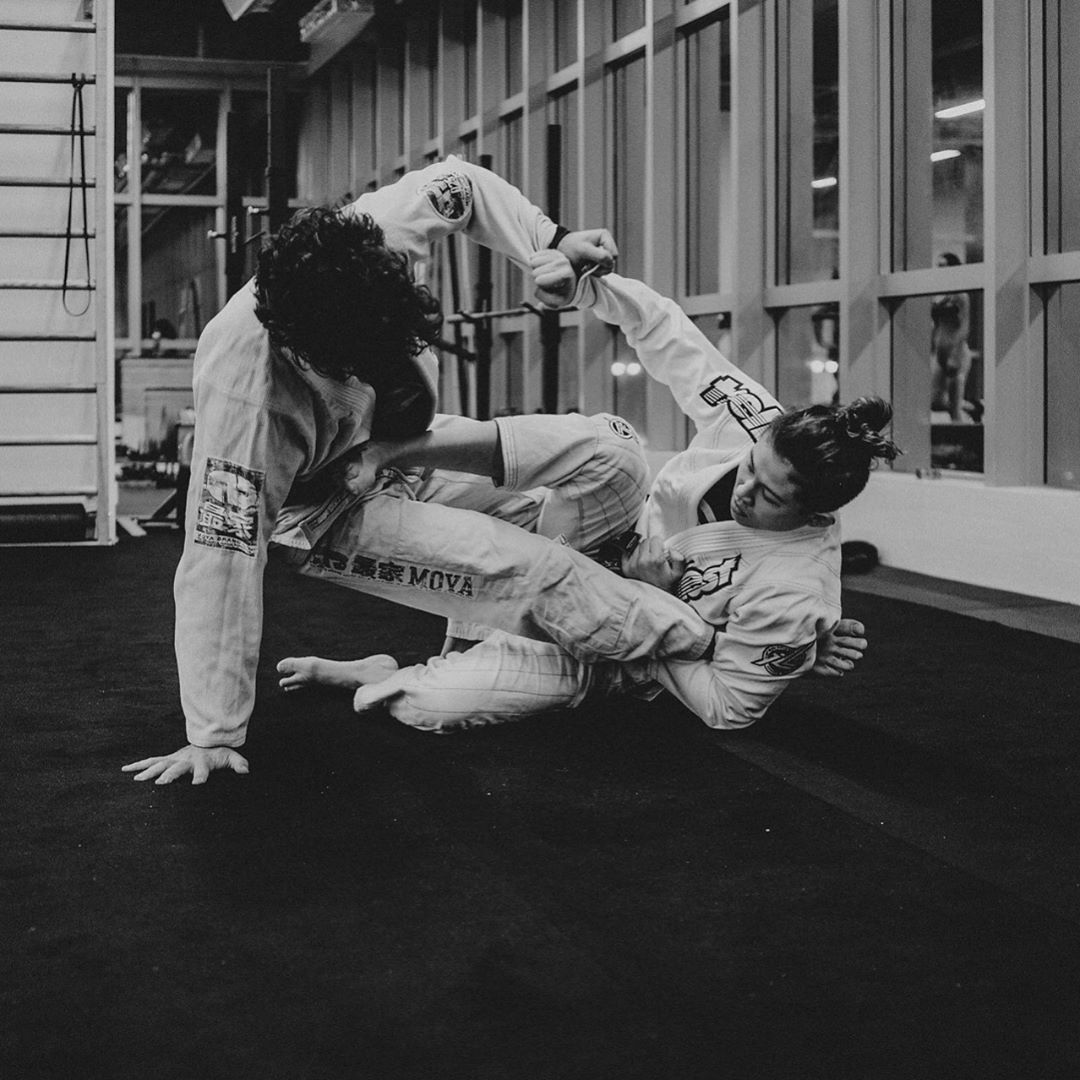
The Illest Guard
-
Where do you see as a major growth country in Asia in terms of Jiu Jitsu and stock of competitors?
I’m seeing really cool things with Korea lately! I’m very impressed with the standard of the Spyder competitions too, it’s really a great organisation and event to help professionalize jiu-jitsu and I am really appreciative when I see competitions and people who have the vision to create opportunities like that for fighters.

Standing for a united Korea
-
Getting a bit clichéd now however we would like to know how you feel as a young woman in a dis-proportionately male dominated sport. Can you maintain your individuality or do you have to become one of the lads? How does this change between countries? I.e. male / female dynamics on the mat.
I think initially when I started I was somewhat attracted to more masculine things anyway, I grew up actually fairly obsessed about bodybuilding and power-lifting and I did identify strongly with the tomboy label. I feel like over the years I’ve gotten more enlightened and it’s really meaningless to me to identify with just one particular label. Just let it be and if people don’t like it, they aren’t who you are supposed to hang around with.
Being born in England, the Brit mentality is still strong within me, I do like to be polite wherever I go and try to ‘do as the Romans do in Rome’ wherever I am. I don’t see much change between countries personally but I think this is because of my adaptability. I can adapt to my environment pretty fast whether it’s a jiu-jitsu environment or a new country. My individuality is a big part of everything I do hahah, I don’t think I can suppress that. I do think people are more accepting of my unorthodox ways because I have accolades to back them up, I do think I’d get a lot more shit from people if I wasn’t accomplished.
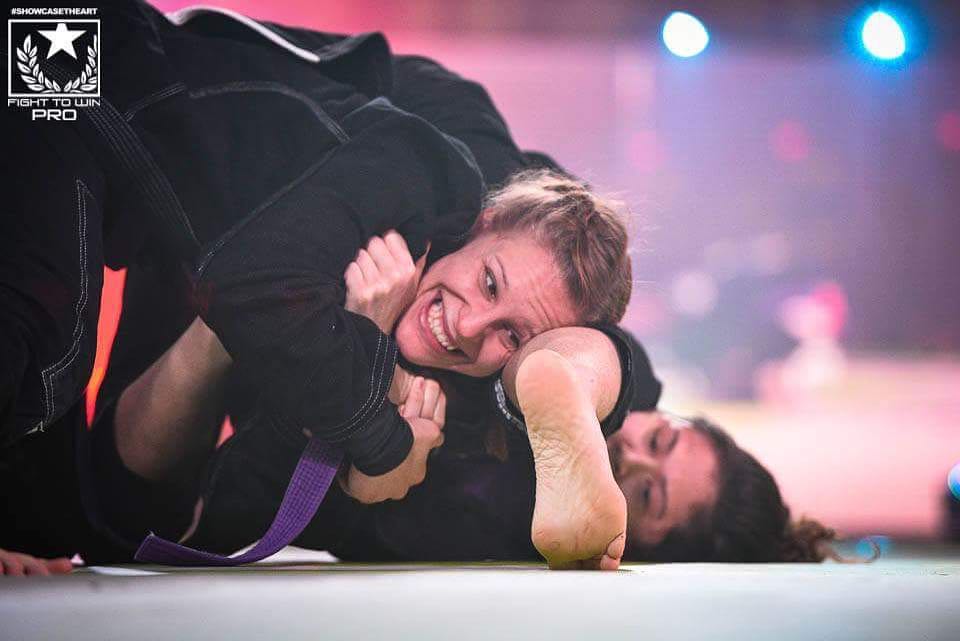
Flex the calf
-
Can you tell us a little more about Nømadic iD?
So Nomadic iD is like my way of thinking and ideas of collaboration amongst the arts in the form of a brand. The initial idea behind the naming is how we develop our identity as humans. For myself personally, I feel like my travels and my exposure to the world, my different experiences in different practises, cultures and arts have greatly molded who I am as a person today.
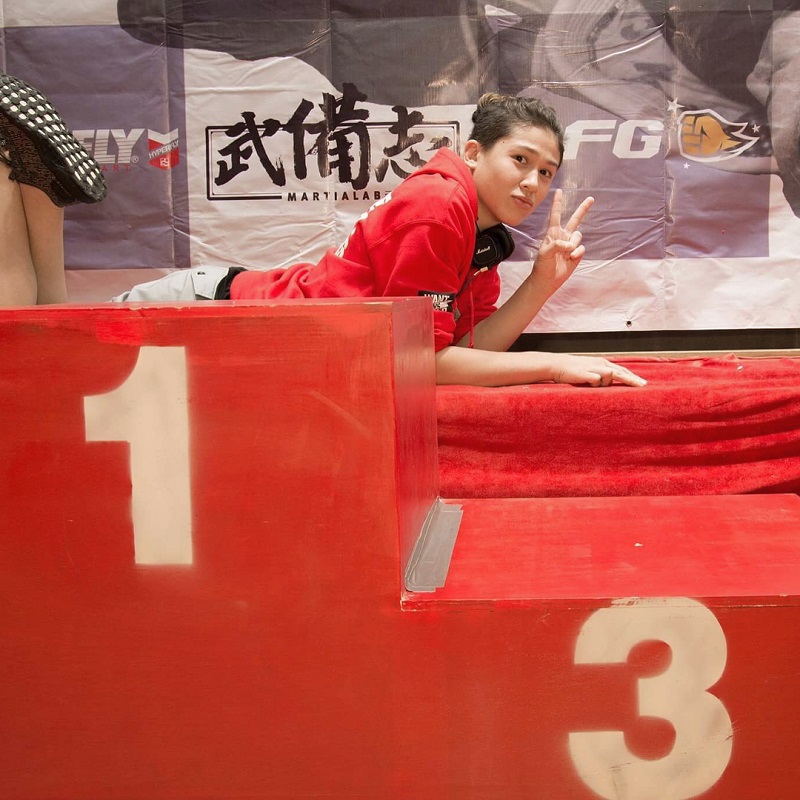
Behind the podium is a story…Or a person
-
How did the inception of Nømadic iD come about?
I started brainstorming about it early 2015. I had just won the Abu Dhabi World Pro Qualifiers in London and I was getting ready to compete at the World Pro. Unfortunately, 2 weeks before I was due to go, I had sustained a really bad foot injury, fracturing my foot in a couple of different places. I still went but I had to have surgery when I got back to the UK and I was out for a bit on crutches. I couldn’t train and I needed to channel my energy and creativity into a different area for a bit. I knew without training jiu-jitsu there was going to be an obvious void in my daily routine, so being productive during this time out was imperative for me.
I began embracing other things that I was passionate about and spending more time in photography and video editing, but also brainstorming and developing ideas and thoughts in regard to Nomadic iD. I didn’t really properly start the website until late 2016/2017 when I started forming more ideas about formats of training and delving more into the world of contact improvisation and dance. I’ve been really inspired from the dance world in regards to pedagogy and class structure.

Competing on psychedelics
-
Which is your favourite country and why?
You’re asking really challenging questions haha, I have a soft spot for different areas of different cities and countries. It’d be ludicrous for me to choose one but if I must…
It may seem biased but Hong Kong would have to be the one.
I have so many memories from this great city and it was the epicentre of my early growth in jiu-jitsu. Everybody knows I’m training under Murilo Santana now at Unity Jiu-jitsu but prior to that I was with Atos Jiu-jitsu and one of my first teachers was Rodrigo Caporal (Atos Hong Kong) and he was one of the first people who pushed me to compete after a few weeks of training under my belt. (I was mortified to say the least, but I did compete) I do sometimes wonder if I would have started competing so early on or if I would even be a competitor today if Rodrigo didn’t push me to compete back then. I am thankful to him for pushing me outside of my comfort zone at the time and giving me the confidence in my competitive ability.
I have a lot of very blissful and painful memories from this city, but there’s always something about the place that brings me an infinite amount of joy and love to be back.
It’s probably another reason why I adore watching the growth of jiu-jitsu in this city that is so close to my heart and I hope to continue to be a part of the revolution that’s to come.
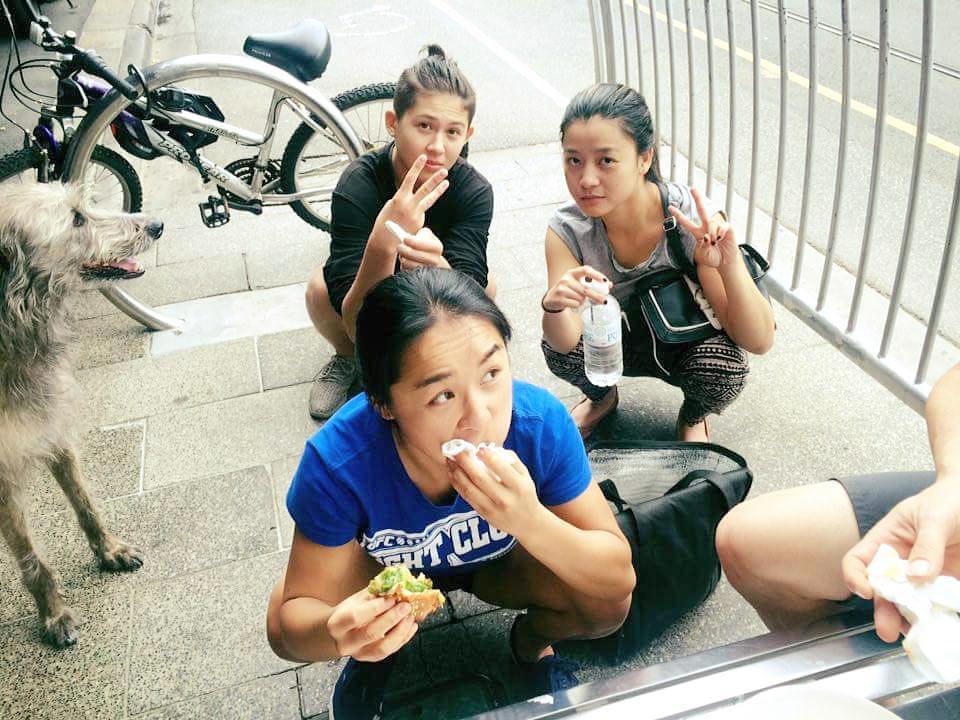
Unwise to discuss HK and revolutions
-
Over 85% of our readership is male aged 18-35. Naturally the most popular requested poll questions was “Are you single?”
WHAT – 85!? Girls, where are you at?
I’m in a very committed relationship with jiu-jitsu as you can see and Whole Foods tends to be a muse. Jokes aside, yes, for now I am.

An eligible lady
-
Lastly, who would like to thank?
I’ll list out some notable individuals first who have been a big influence and a big part of my journey:
Justin Waiau
Of course, also to my sponsors (HYPERFLY / WANT VS NEED) and supporters who relentlessly believe in my ability as a competitor, as a teacher and as a guide. I am truly grateful as exploring my artistry would be much more of a struggle without you all.
鄧嘉寶

